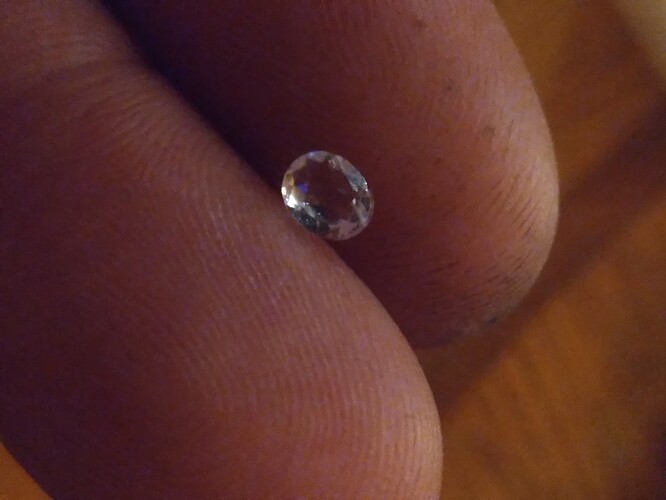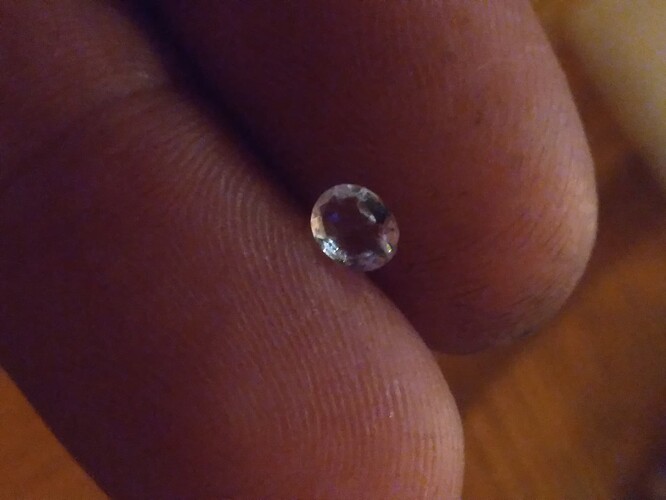Greetings, My name is Matthew, and I am the owner of the Chautauqua Jeweler, located in Jamestown New York. I am having a bit of trouble locating a reputable heat Treatment facility that can enhance the color of Aquamarine. If anybody knows a safe and reputable establishment that offers this service, please contact me with information about the location and possible pricing. Thank you all so very much.
unless this is a very costly stone, you could probably do the heat treating yourself. Put the stone in a test tube and heat it with an open flame, watching for a color change. If the stone doesn’t have significant inclusions, it shouldn’t shatter on heating. Most stones are heated after faceting. -royjohn
Thank you for the information. Yes, they are considerable size and clarity, but are pale in color. Would honestly be nervous about trying this but will attempt with lesser valuable stones. Any other tips would be helpful like what temp., how long to heat for, etc.
heat treating large stones is more risky… the bigger the stone, the slower it takes heat to diffuse into the interior making for thermal stress. Unteated beryls are already under stress due to internal cystal structure disruptions. Ferric iron (Fe+3) replaces some aluminum within the crystal structure but does not impact color. Ferric iron in color centers makes aquamarine geenish or even yellow, as it’s the coloring agent in other stones also… heating in a reducing environment converts ferric to ferrous iron (Fe+2)… ferrous iron is blue, but not always as it depends on the mineral that it’s coloring. Ferric iron yellow is the most common coloring agent in many stones… this explanation is simplistic but is the basis of heat treatments.
the usual temperature for heating is 375 to 425 degrees C… a few stones will turn deep blue at 700C. but these under experimental conditions performed by GIA scientists… Higher temperatures are very risky. Over 450C will cause it to change into a chalky white. Any heat treatment has to be done very slowly to avoid thermal shock. the presence of fluid inclusions, cracks make treatment even more risky. Beryls will crack along the long axis. The usual method is to start heating in a reducing environment that can be well controlled. That usually means an electric kiln that can be shut airtight and the temperature carefully controlled… heating should not exceed 25 degrees C in increments per hour until the target temperature is reached, held there for an hour to two hours, and slowly decreased again. Almost all stones have already been heat treated, either at the mine itself or by bulk wholesale buyers… don’t expect heat treatment to change color saturation. It only changes the tint… If you do an online search, there are scientific articles published by the GIA on aquamarine heat treatment at different temperatures. Spectroscopic color analysis is included. The scientific articles are the most helpful because it gives you the limits on what can be done with heat treatment at different temperatures.
I hope tis gives you some answers but if you have large greenish blue untreated cut stones, that would be unusual for the trade… I wouldn’t recommend as a DYI project. This begs the question on who to send it to… that I don’t know.
Thank you, do you kbow anybody that can do the treatment?
not in upstate New York. There’s got to be someone in NYC that does this. If should be able to find it through your contacts as a jeweler. I live in the middle of nowhere so Denver would be the closest place to me.
Thank you
Thank you all for the tips and info, tonight I successfully was able to turn a near Goshenite into a noticably blue aquamarine, no damage to the faceted stone!
Sorry, no before pics. As you can tell, I used an incredibly poor cut stone to experiment with. Was colorless from the top and now can see blueish green on the crown.
congrants on your experiment… did you use the test tube method as suggested by royjohn? Was it pure beryl and completely colorless or was there a trace of an off yellow tinge?
Slightest bluish green tint only down 1 axis before, and no test tube!
Aquamarine should not need heat treatments.
If a gem needs heat treatment ask why?
I prefer my gems natural.
If treated ask for before photos of examples prior to getting processing done.
Know temperatures for types of treatments and generally only gem acceptable as treated is a Ruby. Otherwise explain in detail every step and procedures done to your knowledge while in your care. Better document details prior to litigation issue later. If you did not do procedures then you can only provide knowledge you have access toward.
Hi Matthew,
I’m just curious why you want to heat treat the stone? Is the reason that it’s extremely large or some other reason?
I was looking through posts and noticed yours. I personally sell aquas that are all shape, sizes, cuts, of ciurse mine are heat treated a a great beautiful color. Most of mine are larger in fact one older type one us a kabbooki (sp) cut.
I know there is demand for untreated aquas but I don’t think it’s that high.
Thank,
Ken

